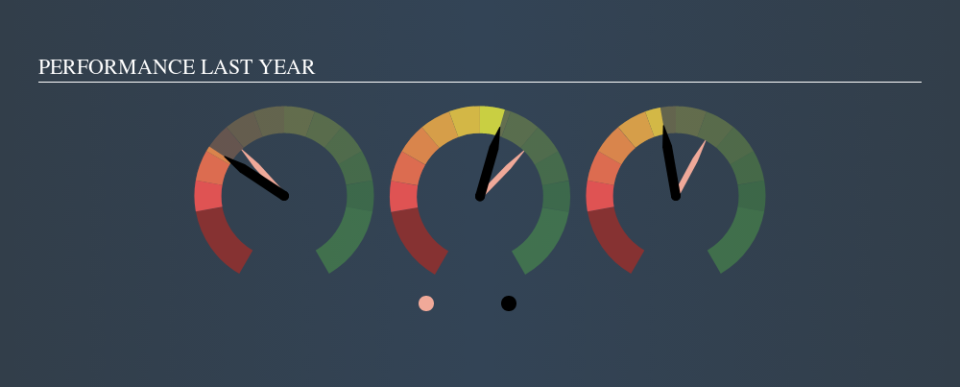What Can We Learn From SDL plc’s (LON:SDL) Investment Returns?

Today we'll look at SDL plc (LON:SDL) and reflect on its potential as an investment. In particular, we'll consider its Return On Capital Employed (ROCE), as that can give us insight into how profitably the company is able to employ capital in its business.
First up, we'll look at what ROCE is and how we calculate it. Next, we'll compare it to others in its industry. Finally, we'll look at how its current liabilities affect its ROCE.
Return On Capital Employed (ROCE): What is it?
ROCE measures the 'return' (pre-tax profit) a company generates from capital employed in its business. Generally speaking a higher ROCE is better. Overall, it is a valuable metric that has its flaws. Renowned investment researcher Michael Mauboussin has suggested that a high ROCE can indicate that 'one dollar invested in the company generates value of more than one dollar'.
So, How Do We Calculate ROCE?
The formula for calculating the return on capital employed is:
Return on Capital Employed = Earnings Before Interest and Tax (EBIT) ÷ (Total Assets - Current Liabilities)
Or for SDL:
0.11 = UK£31m ÷ (UK£403m - UK£114m) (Based on the trailing twelve months to June 2019.)
Therefore, SDL has an ROCE of 11%.
View our latest analysis for SDL
Does SDL Have A Good ROCE?
When making comparisons between similar businesses, investors may find ROCE useful. We can see SDL's ROCE is around the 9.5% average reported by the Software industry. Separate from SDL's performance relative to its industry, its ROCE in absolute terms looks satisfactory, and it may be worth researching in more depth.
We can see that, SDL currently has an ROCE of 11%, less than the 15% it reported 3 years ago. So investors might consider if it has had issues recently. You can click on the image below to see (in greater detail) how SDL's past growth compares to other companies.
When considering ROCE, bear in mind that it reflects the past and does not necessarily predict the future. ROCE can be misleading for companies in cyclical industries, with returns looking impressive during the boom times, but very weak during the busts. ROCE is, after all, simply a snap shot of a single year. What happens in the future is pretty important for investors, so we have prepared a free report on analyst forecasts for SDL.
What Are Current Liabilities, And How Do They Affect SDL's ROCE?
Liabilities, such as supplier bills and bank overdrafts, are referred to as current liabilities if they need to be paid within 12 months. Due to the way the ROCE equation works, having large bills due in the near term can make it look as though a company has less capital employed, and thus a higher ROCE than usual. To counter this, investors can check if a company has high current liabilities relative to total assets.
SDL has total assets of UK£403m and current liabilities of UK£114m. Therefore its current liabilities are equivalent to approximately 28% of its total assets. Low current liabilities are not boosting the ROCE too much.
The Bottom Line On SDL's ROCE
Overall, SDL has a decent ROCE and could be worthy of further research. SDL looks strong on this analysis, but there are plenty of other companies that could be a good opportunity . Here is a free list of companies growing earnings rapidly.
If you are like me, then you will not want to miss this free list of growing companies that insiders are buying.
We aim to bring you long-term focused research analysis driven by fundamental data. Note that our analysis may not factor in the latest price-sensitive company announcements or qualitative material.
If you spot an error that warrants correction, please contact the editor at editorial-team@simplywallst.com. This article by Simply Wall St is general in nature. It does not constitute a recommendation to buy or sell any stock, and does not take account of your objectives, or your financial situation. Simply Wall St has no position in the stocks mentioned. Thank you for reading.

 Yahoo Finance
Yahoo Finance 
